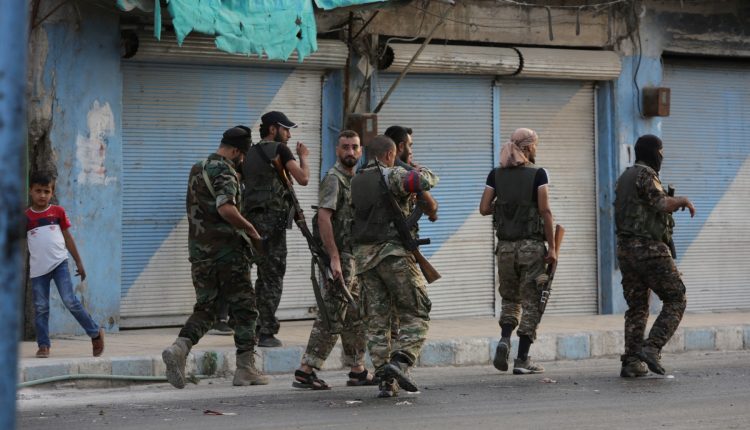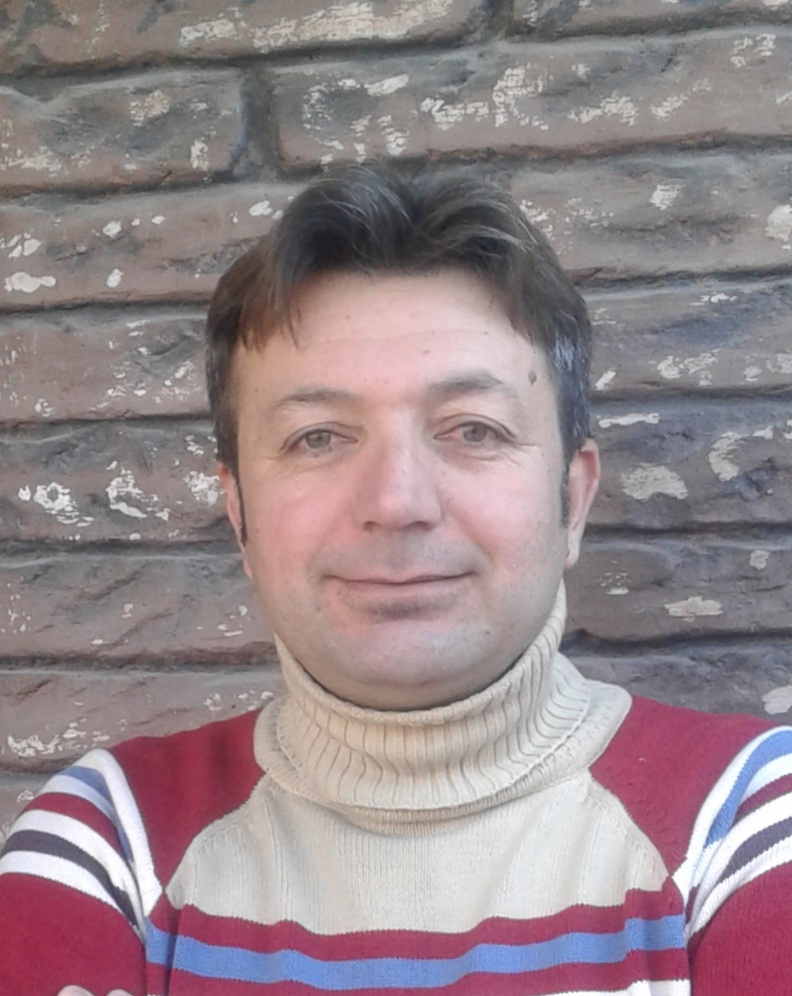Syria in the crucible of Jihad
By Lazghine Ya'qoube
The fall of the dictatorship of the Syrian President, Bashar Assad, late in December 2024 has opened the door wide for speculation about what the future holds for the religiously diverse and ethnically mixed country.
Strangely, two days after Assad had fled, Germany’s Minister for Foreign Affairs, Annalena Baerbock, called for the protection of minorities from the new Islamist rulers of Damascus.
Not unexpectedly, the post- Assad Syria has been marked by anarchy, discord, and revenge. Ever since, Syria’s already fractured territorial integrity, and its shredded social co-existence seem to be on the edge of the precipice.
Baerbock’s call provides a bred- in- the- bone insight into Syria’s political landscape and its social fabric, following 14 years of a protracted civil strife.
Before the year draw to a close, violations against Christians and Alawites came to the fore. In January 2025, Ahmed al-Sharaa, leader of Hay’at Tahrir al-Sham (HTS), formerly al-Nusra Front, was appointed Syria’s interim president.
While on the surface, al-Sharaa has relentlessly sought to polish his image by introducing himself as a moderate statesman, and fruitlessly trying to assert minorities will not be harmed, it seems- to all intent and purposes- that Syria’s de factor ruler, is either unable, or unwilling, to alienate himself from his ideological affiliations, nor to bring into subservience the medley of unbridled factions, which have no restraining force on them.
Not only al-Sharaa’s government has taken a hardline position and adopted religious rhetoric, it has been inciting violence in the name of God, stirring up religious hatred against people on the grounds of their religion.
In March, under the pretext of fighting “remnants of the Assad regime”, a call to Jihad was issued against Assad’s Alawite community. Fervent supporters of the government, vengeful people, and pillagers from across the country converged on Alawite cities, towns, and villages.
In the days after March 6, Syria’s Mediterranean Coast- heartland of the Alawite community- became scene to unprecedented mass killings, war crimes, and crimes against humanity.
Groups affiliated with al-Sharaa went on the rampage, and gave free reigns to their unrestrained appetite for murder. More than 1500 armless men, women, and children were killed on the spot. This, nonetheless, was not the last delicate issues of the kind.
Continuingly, in late April, apparently on the background of a leaked audio message- falsely attributed to Marwan Kiwan, a Druze sheikh- insulting Prophet Muhammad– an accusation categorically denied– General Security Command mounted an assault on the Druze community in the capital, Damascus.
One more time, Sunni militias and auxiliary forces affiliated with the authorities descended on the Druze neighborhoods of Jaraman and Sahnaya. Furthermore, in Hama, Homs, Damascus, Idlib, and Aleppo, many called for the annihilation of the Druze.
Bizarrely, in an offence of state incitement to hatred, Syria’s Interior Ministry issued a statement extending thanks to people for their “jealousy” over Prophet Muhammad. The systematic and wide- range Islamist, pan-Arabist exclusionary discourse, verbal abuse or hate speech, cast grim clouds on the future of those not nursing Islamist ideology.
In many ways, the abhorrent and unjustified post- Assad communal violence has appalled a wide spectrum of the Syrian population. The butchery has led many to the fear that this could be a prolegomenon to a wider range of violence in a country already rife with tensions, where factionalism, tribalism, regionalism, and above all Islamism have the upper hand.
Variably, at some point during the Syrian crisis- between 2011 and 2013- there existed nearly 1000 factions purportedly fighting the regime. With the passage of time, these factions were engaged in infighting. However, when the Islamic State in Syria and Iraq (ISIS) came to the fore, it dominated the spectrum proper.
Mistakenly, many observers attribute Syria’s recent radical Islamist dilemma to the recent civil war, however, history of the Islamist thought in Syria, reveals a different story.
It goes without saying that part of Syria’s Islamist problem lies- solely but not wholly- in the grievances harbored by the Sunni majority against the Alawite regime of Bashar Assad, and prior, of his father, Hafez.
Basically, the struggle over the power in Syria was ideological. In this sense, the Alawite- Sunni dimension is part of the problem. That is to say, Syria’s violent perspective predates the Assad era. The roots of violence could be traced back to early 1923s.
Retrospectively, in mid- 1930s, Mustafa Sibai, born to a religious family in Homs, finished his religious study in Cairo and returned home. Mentored by Hassan al-Banna, head of the Muslim Brethren, al-Sibai brought a strange school of thought to the country, which was still under the French Mandate.
Upon arrival, al-Sibai soon established a religious group called Shabab Mohammed. Al-Sibai had a vision that religious scholars should play a role in the political life, to defend rights of the nation against the imperialist and colonialist West, in a broader sense of an Islamic revival.
For this purpose, he established in 1946 the Syrian branch of Muslim Brethren. He is said to have toured the country advocating for his perception, part of which calling for Jihad. Al-Sibai advocated for an Islamic state. In pursuit of his goal, he fought the British in Egypt and Iraq. Let alone the French in Syria.
Beyond the border, al-Sibai led the Syrian Muslim Brethren in the 1948 war against Israel. Later, he would play a fundamental role in Syria’s political life in 1950s, where the ideological struggle between the “atheist” Baathists and the conservative Muslim Brethren was taking shape.
Legally, al-Sibai chaired the drafting committee of the 1950 constitution. He proposed that Syria’s constitution stipulate Islam be “the religion” of the state. Syrian elites rejected the bid.
During the military rule of Adib Shishakli, the group was banned and al-Sibai went into exile to Lebanon. In 1954, al-Sibai established the Sharia Faculty in Damascus, where he freely delivered treatises of al-Banna to his students. Al-Banna’s notion that “Islam is religion and state”- in emulation of Prophet Muhammad’s model of the Medina Constitution- put Islamists in full opposition to secularists (Baathists and Communists). The first physical encounter would come in 1964.
During Syria’s unification with Egypt, 1958- 61, the party screeched to a halt as all parties were dissolved. In 1964, al-Sibai died of hemiparesis. The same year his uncharismatic successor- Issam al-Attar- left the country, once for all.
Sheikh Marwan Hadid, an agricultural engineer by profession, who had also studied in Cairo, took the lead. Holding a radical mindset, Hadid soon came into prominence during the Sultan Mosque occurrence in 1964.
A disciple of the Egyptian theorist of the group, Sayed Qutub, Hadid took the group from the arena of politics to that of violence.
An altercation between a Baathist student and another Islamist over “the rule of God,” developed into protests, in which the Baathist student (Nizar Shimali) was stabbed to death. Armed protesters took sanctuary to the mosque, which was eventually shelled.
Upon arrest, Hadid was sentenced to death. He was, however, later pardoned (by President Amin Hafez), and released from prison. This event laid the groundwork for the Islamist- secularist enmity for the years to follow.
During the crisis, Hadid told Hama’s governor at the time, Abdul Halim Khaddam, “We have no alternative to Islamic rule.” Owing to his radical belief, Hadid defected from the Muslim Brethren, and formed the Fighting Vanguard, a closed Jihadist secretive order, targeting Baathists.
The rise to power of the Alawite Baathist faction in February 1966, further intensified animosity. Hadid travelled to Jordan and trained in Palestinian resistance camps, after the Six- Day War of 1967. A Jihadist environment entirely hostile to Assad.
In 1969, a rift was made between Damascus (Issam al-Attar) and Aleppo (Abdul Fatah Abu Ghida) over leadership, among other things. Hama, assuming neutrality, became the epicenter. Later, it would bear the brunt of punishment.
Upon returning in 1970, Hadid began to attract single- minded devotees, who were initiated into closed cells, based on blind disciplined obedience.
In 1973, Assad introduced a new constitution for the country. Hadid protested the “lacking of characterization of Islam” as the state religion. Following deadly clashes with security forces, and nation- wide protests, Assad finally conceded. The permanent Constitution stipulated that the head of the state shall be a Muslim. Assad was declared “the enemy of God.”
Hadid believed the “godless Baath” could only be toppled by the use of force. Therefore, waging Jihad- which is next in importance to the profession of the faith- was a compelling necessity.
Hadid went further by declaring Alawites infidels, and set a dangerous precedent when he transformed Jihad’s textual ideas into practical ones. Citing fatwas of the Sunni medieval traditionist, Ibn Taymiyya, Hadid declared the holy Jihad against the “Infidel Nusairian” regime of Hafez Assad., triggering the Syrian Jihad.
With the hit- and- run tactic, Hadid’s disciples inflicted painful blows on the regime, not only in Hama, rather in the heart Damascus, including Assad’s inner circle. No one was sure who was behind the attacks whose victims were mainly Alawites.
Starving himself to death in the prison in 1976, Hadid became an inspirational figure in the jargon of Syrian Jihad. His legacy has given rise to deviant medieval interpretations of Islam. Upon his death, his followers– notably his right hand, and discreet successor Abdul Sattar al-Zaim– embarked on a wave of unattributable “revenge” assassinations.
When Zain was killed in 1979, the baton was passed to a more ardent and influential figure, and an articulate ideologue and exponent of Jihad. Adnan Uqla, a civil engineer from Raqqa, who gained reputation for violence, navigated the challenge.
Labelling the regime as pre-Islamic (polytheist), Uqla would plunge Syria into bloodshed and chaos, which would leave a lasting mark on the country’s history. An unrestrained foolhardy Jihadist, he is to have been dismissed from the Muslim Brethren in 1970.
Uqla leapt into fame when he masterminded the massacre of Alawite cadets in Aleppo’s Artillery School in June 1979, in collaboration with Ibrahim Yusuf, a Baathist officer- who had pledged allegiance to the Muslim Brethren in 1977.
In the night of June 16, Yusuf summoned 300 cadets to an urgent meeting in the dining hall. He separated Alawites, squeezed them in the corner, and ordered assailants to unleash the beast. Allegedly, Uqla perpetrated the massacre without the advance knowledge of his senior, Hisham Jumbaz.
While the government begrudgingly admitted 32 cadets were killed, other accounts reveal however a different story. Many more were wounded. The carnage was the most serious assault against the regime of Hafez Assad, who was on a rare state visit to Iraq.
This was the most overt radical phase of violence in Syria. The damage was unimaginable. The Aleppo carnage was a twofold; in the sense, while it gave Assad the excuse to resort to force, he garnered support from the dissident Alawites.
To Uqla owes the failure of the 1979 initiative, brokered by Amin Yaghan- former member of the group- to open dialogue in order to end the spate of violence in the country. Assad- still willing to avert violence- released some 500 prisoners from prison.
Then came the last straw on June 26, 1980, when Assad narrowly escaped an assassination attempt during a state visit by the President of Niger, Seyni Kountche. In March, Assad changed his rhetoric, accusing them of “distorting” Islam, and labelling them as “criminals who butchered children, women, and elderly people in the name of Islam.” Furthermore, in July 1980, Law 49 was enacted, making membership in the Muslim Brethren capital offence.
Between 1979 and 1981, nearly 300 political assassinations took place in Aleppo alone. In turn, nearly 2000 supporters of the Muslim Brethren were killed.
In January 1982, authorities discovered a plan by brigadier generals (Salah Halawah, Taysir Lutfi, and Nazir Saqqa) to overthrow the Assad regime. A date was scheduled on January 25. Some 300 officers were arrested in the process.
Upon the disclosure, as the lesser of two evils, the Fighting Vanguard- led by Umar Jawad-was bounced into a premature uprising in Hama. Loudspeakers atop mosques minarets called on the people to begin Jihad on February 2. Hama was a death- or- life battle.
Assad cast down the gauntlet to his enemies. He assigned the task to his brother Rifat, leader of Defence Companies. Rifat crushed the uprising, but at a costly price. In a two- week spree of killings, much of the city was razed to the ground and thousands were killed.
With hundreds killed, thousands put in prison, the surviving members of the Muslim Brethren fled into exile to Iraq, Turkey, Iraq, and Saudi Arabia. Uqla was finally ensnared into northern Syria in 1983. The Fighting Vanguard disappeared.
Over the years, zealots found themselves in Afghanistan, where Syrian Jihadists formed the nucleus of Afghan Arabs against the Soviet Union. They played a considerable role in the formation of al-Qaeda by providing fighters and theorists.
The U.S. invasion of Iraq in 2003, opened a new horizon in the development of Jihadism. Ironically, Syria sent fighters and facilitated the flow of Jihadists and foreign fighters into Iraq from all over the Middle East and beyond to fight the American forces. Iraq became a cauldron of high- profile Jihadists. It was in this atmosphere that ISIS and al-Nusra Front, among many others, came into existence.
With the so-called Arab Spring reaching Syria in 2011, along with other Salafist- Jihadist groups, Syrian Jihadists would make their way back to fight the “Nusairian” regime. Abu Firas al-Suri, Abu Khaled al-Suri, and Abu Firas al-Tarsusi, are a case in point.
Later, they would declare the holy Jihad with the aim to, first topple Assad, and second, commit to building a medieval Umayyad- styled Islamic caliphate. A decades- long- pent- up dream that would come true on December 8, 2024, setting off a train of events that crookedly ran like a reptile, that- from time to another- raises its ugly head, taking the country to nowhere.




Comments are closed.